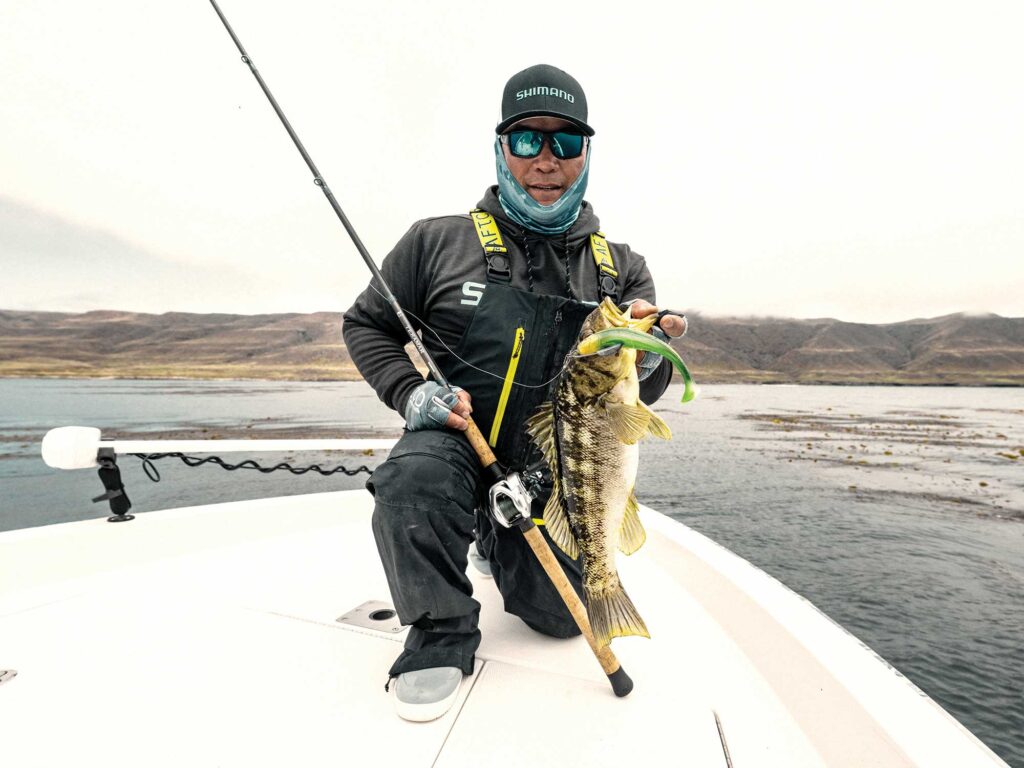
Capt. Benny Florentino pulled back the throttle of his bay boat at the edge of an expanse of thick kelp beds that stretched for acres along the rocky, wave-swept shores of San Clemente Island, some 50 miles off the coast of Southern California. Florentino scanned across the fields of swaying amber fronds and peered into the depths between mats of kelp to gauge the current and water clarity before pronouncing a decision. “Let’s fish here,” said the full-time guide (pictured left), who also serves as a pro staffer for Shimano.
I thought, How are we supposed to fish here? Our target species was calico bass, also known as kelp bass. I was sure there’d be big ones living in the dense kelp, but how could we present baits through all these weeds? I soon found out.
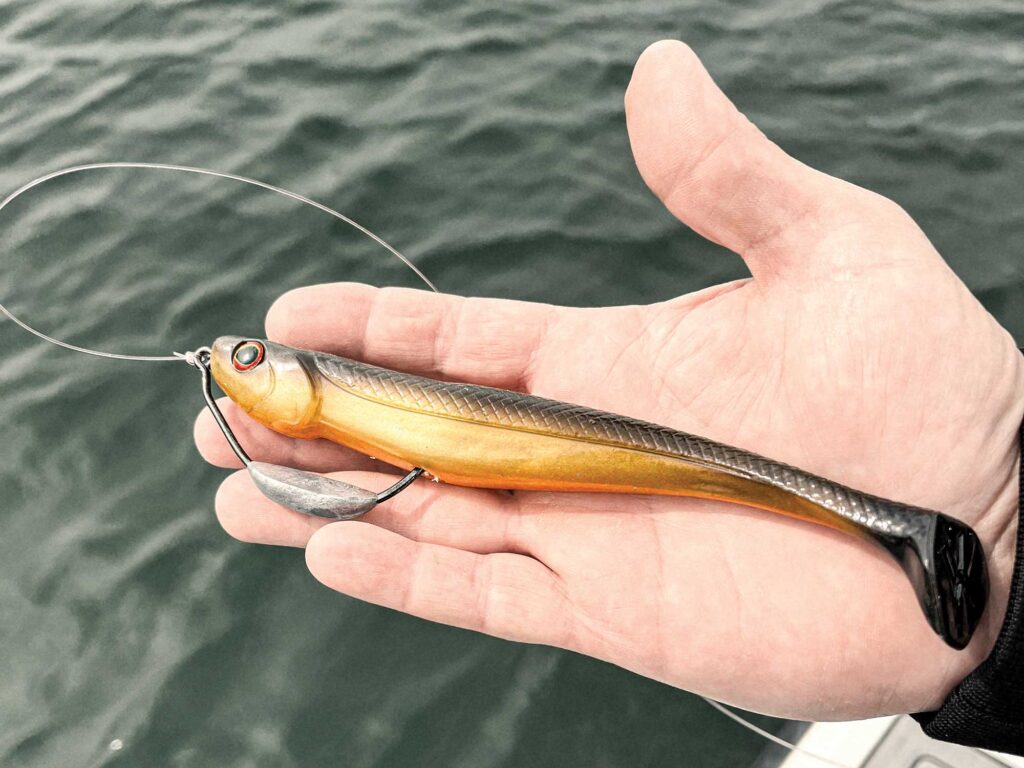
Weedless Wonder
They key to success lies in weedless baits that merge lures first developed by West Coast saltwater bass anglers with snag-free rigs originated for freshwater bass fishing. Paddle-tail swimbaits were invented in SoCal about 35 years ago by the now-defunct Worm King lures, but other West Coast brands also produce these saltwater lures, including MC Swimbaits and Kicker Lures, among others. When first introduced, swimbaits did not go unnoticed by freshwater bass anglers, who quickly put these lures to effective use on largemouth and smallmouth bass.
Initially, these soft-plastic lures were rigged with leadheads. But this created an issue for many bassers who wanted to work swimbaits in heavy cover. Enter the weedless solution, first developed by freshwater bass anglers. A wide-gap hook, rigged weedless-style, offered an elegantly simple method for retrieving swimbaits through lily pads, weeds and timber.
Calico anglers quickly caught on, and that brings us back to the kelp beds off Southern California. Florentino pulled out a Kicker 7-inch Pickle Kick swimbait and rigged it with an Owner 8/0 ½-ounce weighted breast hook with a corkscrew keeper. This keeps the business end of the hook just below the back of the swimbait so it can be retrieved through heavy kelp without snagging, often producing dramatic results.
In many ways, this is the next-best thing to topwater fishing. When winding at speed, the lure swims just below the surface, and aggressive calicos bolt from their lairs in violent attacks that often take them airborne in a spray of white water. It’s not unusual to see an entire school of bass give chase, vying with each other to eat the lure. “It makes for very exciting fishing,” says Florentino, who has fished weedless swimbaits in SoCal for more than 20 years.
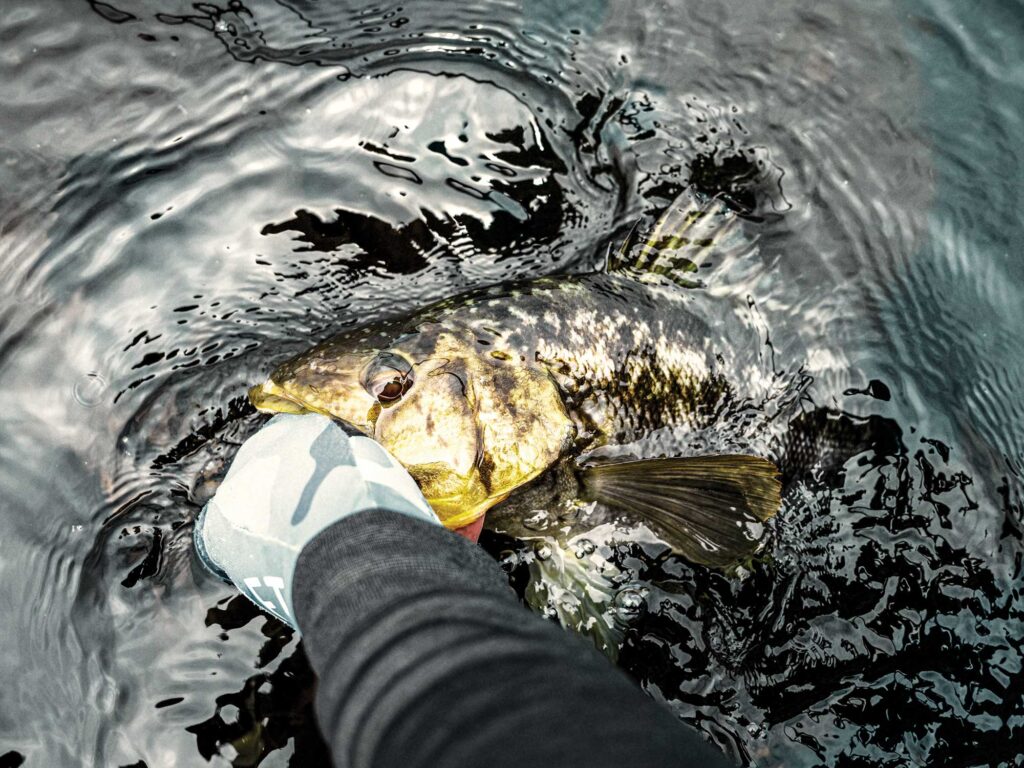
Current and Edges
While calico bass may call kelp beds home, the big ones—they can grow to weights in excess of 10 pounds—prefer to hunt at certain times and places amid the weeds. Moving water proves crucial, and in SoCal, it can be driven by wind as well as tide. No current, no bites, Florentino points out.
Once current starts running through kelp beds, the fronds bend over in the flow. A strong current will bend the kelp completely below the surface. Current of any kind will promote good calico fishing, but the direction of current flow will dictate the best areas to fish.
“You want to fish the leading edges,” Florentino explained as he set up the boat on a drift across a kelp edge. “I usually fish only half of the up-current or upwind portion of the kelp bed.”
Florentino coached me to cast the swimbait and begin retrieving it as soon as it hits the water. “You want a steady retrieve,” he reveals. With the Shimano Tranx 300HG reels he uses, the lure is moving at 40 inches per crank.
Florentino has found that strikes frequently occur as the lure crosses through small open pockets and lanes between kelp stringers on the surface, and that’s exactly what happened on my first cast. Just as the swimbait entered a small opening in the kelp, a chunky bass rocketed up from below to inhale the lure.
I swung to set the hook, but I quickly discovered that was a mistake. “You can’t swing on these fish,” Florentino said after noting my miscue. This is because the fish usually swims toward you after the bite, and by swinging you pull the bait out of its mouth. Instead, keep grinding until the fish turns and the hook sets itself.
Keep Moving
Florentino continually works fresh new areas, a key to consistently catching calico bass within kelp-bed habitat.
“You don’t necessarily need a trolling motor,” he says. “Just let the boat drift over the kelp and cast to new areas.” Sometimes Florentino will tilt his Mercury outboard up to keep the lower unit from hanging up in the kelp while drifting.
Anglers also stand a chance at hooking other species while working weedless lures in the help, including California yellowtail and white seabass. However, the chances of landing these brutes—which regularly reach weights in excess of 30 pounds—are pretty slim. “About 90 percent of the time, the fish wins,” Florentino says, noting that it’s easy for these powerful fish to dive into the weeds and break off.
Calico bass will also seek escape in heavy kelp, as I found after hooking a 3-pounder later in the morning. It managed to bury itself so deep in the weeds, I could not budge it. Florentino suggested I free-spool some line. I slacked off and sure enough, the calico swam out of the ball of weeds, allowing me to engage the reel, resume the fight and eventually land the fish, albeit wrapped in tattered kelp leaves.
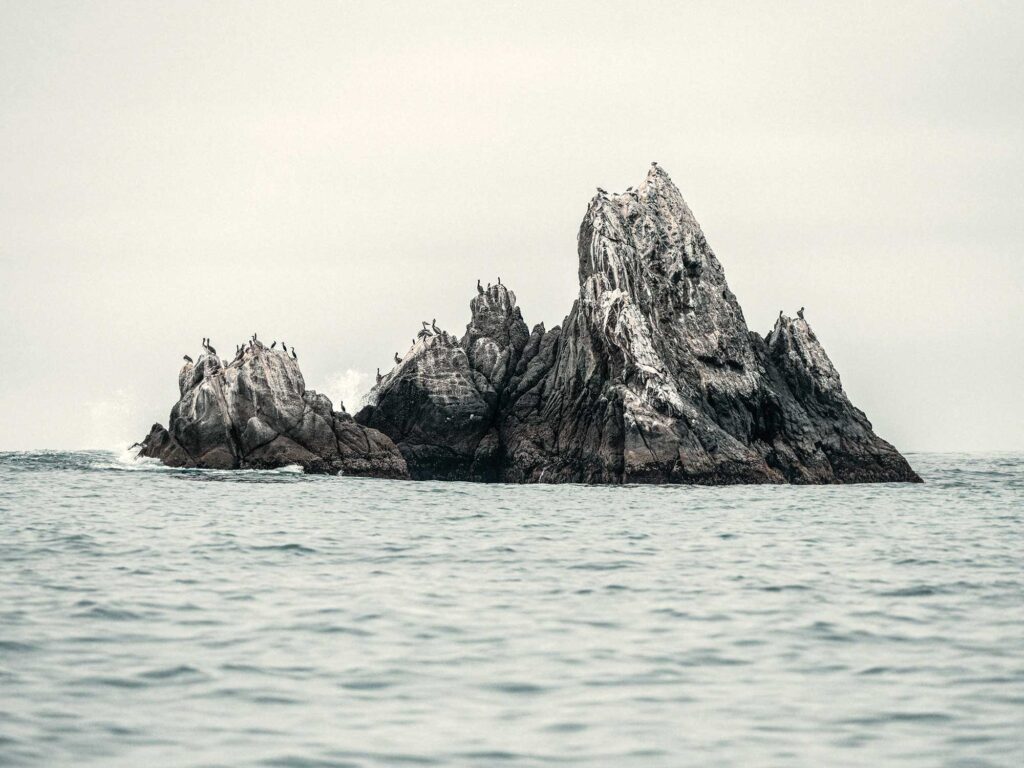
Where to Fish
Weedless lures work in just about any kelp bed, and there are plenty of them around the shores of SoCal offshore islands such as Santa Catalina, Santa Barbara and Santa Cruz, as well as San Clemente. Abundant kelp beds also exist along the rocky shores of the coastal mainland in areas such as the Palos Verdes Peninsula, Laguna Beach, Dana Point, San Onofre, La Jolla and Point Loma, as well as the coast of Mexico’s northern Baja California.
Late spring and summer offer great calico fishing, but these bass will bite just about any time of year, as long as the water temperature stays consistent for a few weeks at a time. “When the water temperatures fluctuate a lot, the calicos stop biting until the temps stabilize, then they bite again,” Florentino observes.
Read Next: Calico Bass Fishing
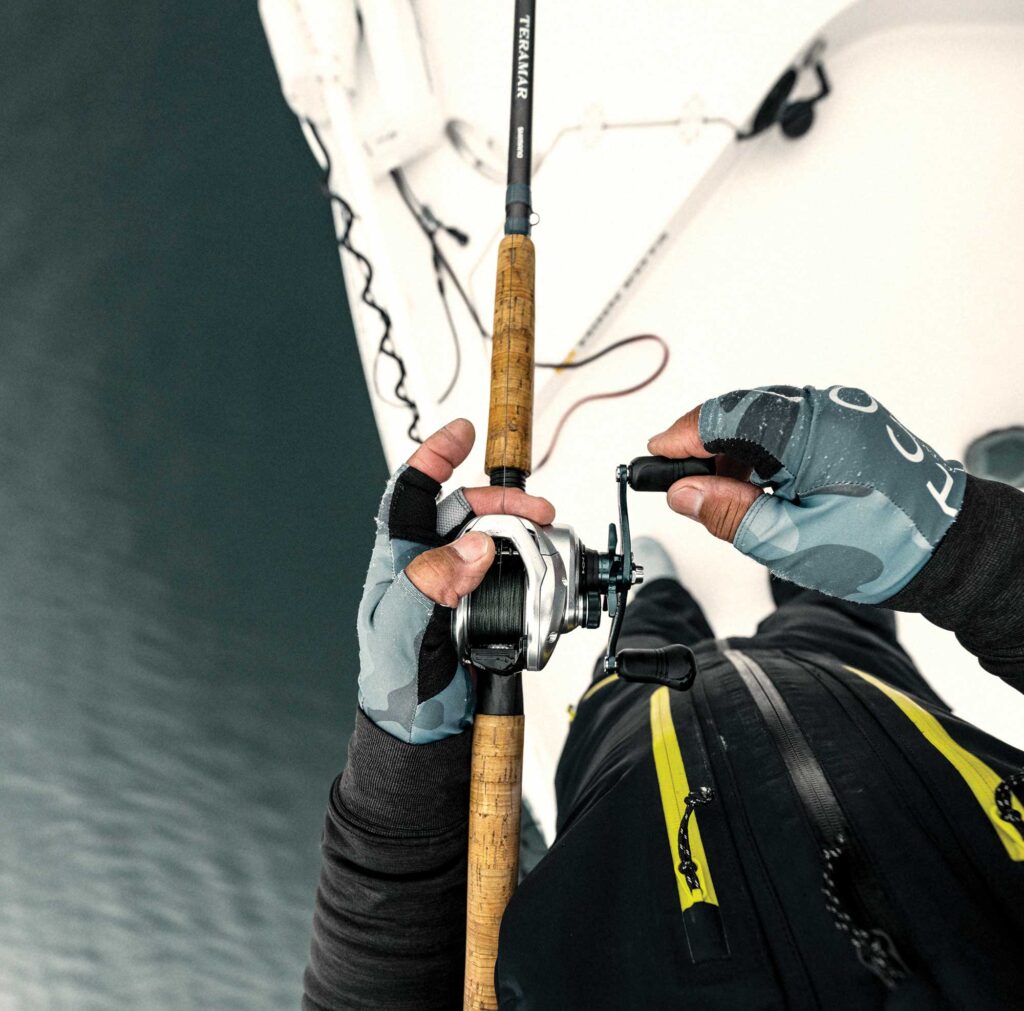
Right Tackle
To fish this technique effectively, you will need the right tackle. Florentino’s reel of choice, as discussed earlier, is a Shimano Tranx 300HG because the high gear ratio offers the speed to burn weedless lures over kelp beds. He loads this low-profile reel with 65-pound-test PowerPro Max Quatro braid and uses a short 50-pound-test fluorocarbon top shot. The rod he uses is a Shimano Teramar West Coast 76MHC model.
“The 7 ½-foot rod is easy to cast all day, but also has plenty of power to pull a big calico from the kelp,” he points out.
As mentioned earlier, Florentino likes to fish Kicker’s Pickle Kick swimbaits for calicos. He usually chooses the 7-inch model, but will also fish the 9-inch version when one of his clients wants to focus on trophy fish, or when fishing a local tournament where quality takes priority over quantity. The favorite Pickle Kick color patterns for Florentino include the CommitMint, Gill Bill and Senorita. He uses a cross-lock snap to facilitate quick lure changes during a day of fishing.
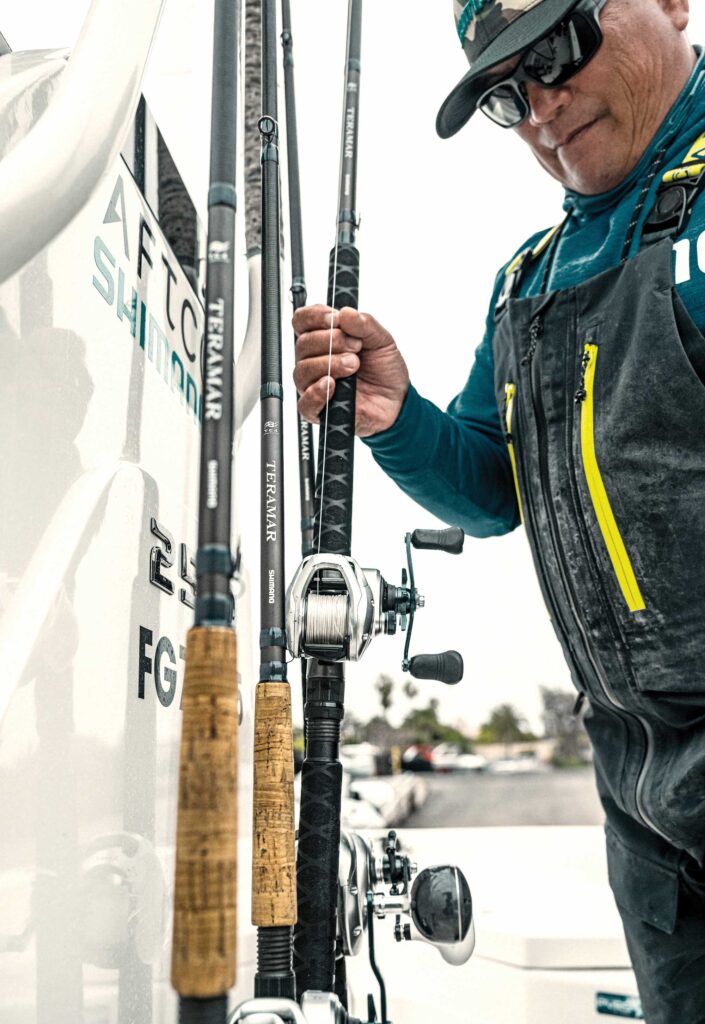
In the end, it was the veteran angler Florentino who caught the big fish of the day—an estimated 6-pound calico, which made for great photos before we released it. Florentino always practices catch-and-release when fishing for calicos.
Ultimately, weedless swimbaits represent an innovative angling approach to a hard-to-fish habitat, making the impossible job possible for fishing in the calico’s favorite cover. That’s why I call these lures weed whackers. If you want to experience this fishing for yourself, you can reach Capt. Benny Florentino at fishcoastalcharters.com.









